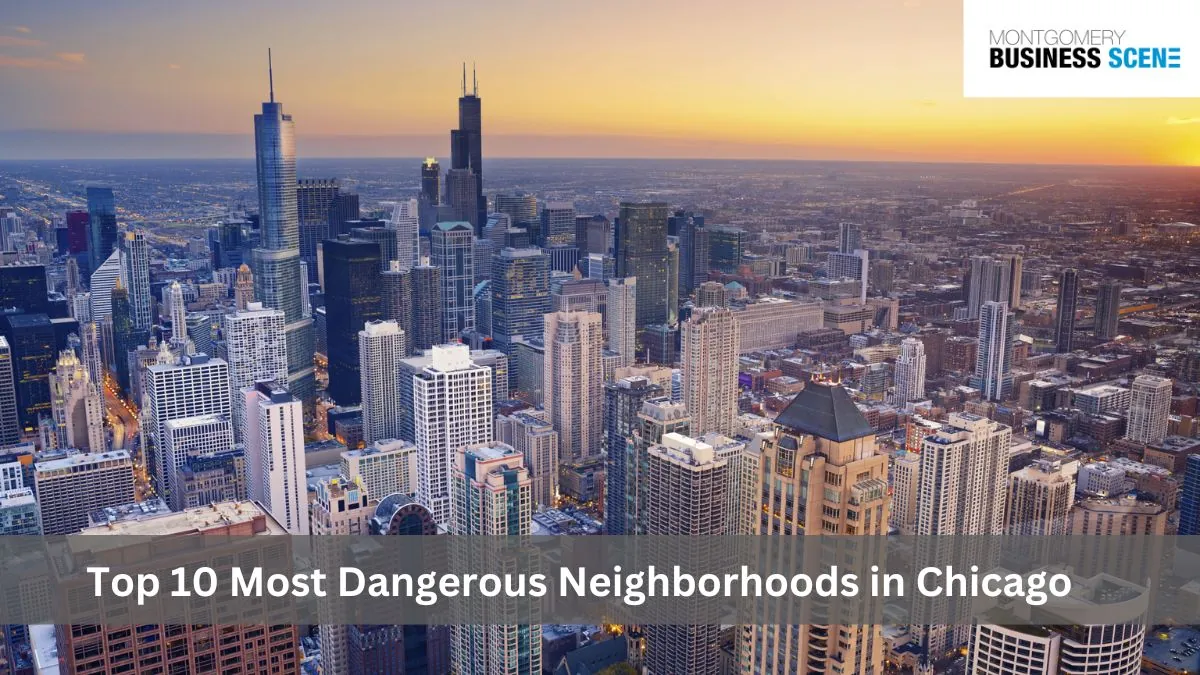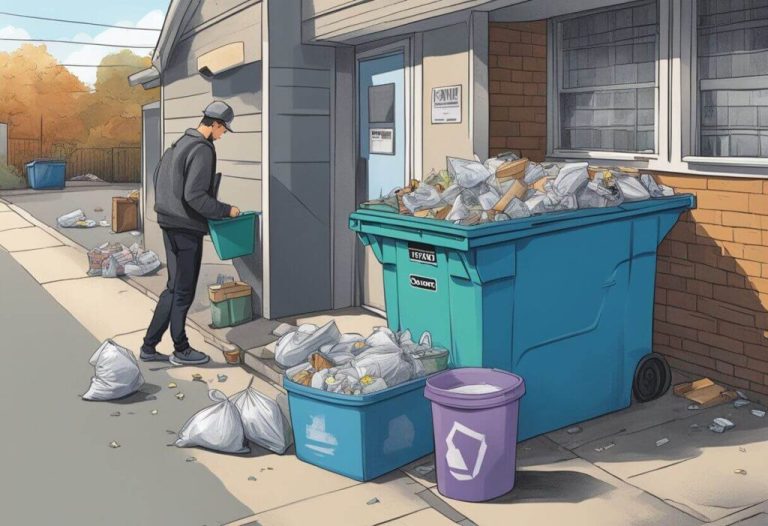Chicago is renowned as a cultural and economic powerhouse in the United States, but it’s no secret that certain neighborhoods are associated with high levels of crime and violence. In this article, we’ll take a closer look at the ten most dangerous areas of Chicago.
Chicago is a vibrant and diverse city that is home to over 2.7 million people. However, it is also known for its high levels of violent crime, which is a cause for concern. Crime rates in Chicago are 67% higher than the national average, making it a particularly risky place to live or visit. Sadly, both violent and property crimes are prevalent in the city, with gun violence being a major issue. Despite these challenges, Chicago remains a popular destination for tourists and a beloved home for its residents.
10 Most Dangerous Neighborhoods in Chicago
1. Washington Park
Washington Park, located in Chicago, is considered to be the most dangerous neighborhood in the city. The area has a very high violent crime rate, which is 701% higher than the national average. With a population of 12,707, the overall crime rate in Washington Park is also 297% higher than the national average. Violent crimes such as murder, robbery, and assault are alarmingly common in this area, making it a place to be avoided at all costs.
2. West Garfield Park
West Garfield Park, situated in the South Side of Chicago, is notoriously known for being one of the most perilous neighborhoods in town. It has an alarmingly high violent crime rate, which is 257% higher than the rest of the city. This means that the residents of West Garfield Park have a 1 in 20 chance of falling victim to a violent crime. The primary reason behind the high rates of violence in this neighborhood is the widespread gang activity present in the area.
3. Englewood
Englewood, situated in Chicago’s South Side, is another area that is considered one of the worst in the city. With a population of 24,369, it has a high number of people living below the poverty line. In 2022, Englewood’s crime rate was 125% higher than the Chicago average, with incidents of violent crimes such as assault, robbery, and murder being quite common. The neighborhood’s high level of gun violence makes it a cause of concern for safety, further cementing its position as one of the worst areas in Chicago.
4. North Lawndale
North Lawndale, located on the West Side of Chicago, is regarded as one of the most perilous areas in the city. Once a thriving and expanding neighborhood, North Lawndale suffered a significant setback due to the 2008 recession. This neighborhood, with a population of 34,794 residents, is believed to have around 70% of men aged 17-45 with criminal records.
The crime rate in North Lawndale is alarmingly high, with a staggering 198% increase compared to the Chicago average. Shockingly, there were 10,606 crimes per 100,000 people, which means that residents have a 1 in 9 chance of falling prey to some form of crime. The situation gets even worse when it comes to violent crimes, with 3,003 incidents per 100,000 people in 2020. This translates to residents having a 1 in 34 chance of becoming a victim of a violent crime, making it a serious concern for the community.
5. East Garfield Park
Garfield Park, situated in West Chicago, has a notorious reputation for its high rate of violent and property crimes. The statistics for 2022 reveal that there were more than 2,800 cases of violent crime and over 7,500 incidents of property crime. Gun violence and gang-related activities continue to pose significant challenges in East Garfield. Shockingly, in 2021 alone, there were over 77 shooting incidents in the region.
According to recent statistics, the crime rate in East Garfield Park is quite high, with a rate of 10,195 crimes per 100,000 people. This indicates that the residents of this area have a 1 in 10 chance of falling victim to some form of crime. Specifically, in 2020, the rate of property crimes was 7,117 per 100,000 people, which translates to a 1 in 14 chance of becoming a victim of property crime. The rate of violent crimes in the same year was 3,078 per 100,000 people, meaning the residents have a 1 in 33 chance of becoming a victim of a violent crime. These figures highlight the need for increased vigilance and security measures in East Garfield Park.
6. West Englewood
Located in Southwest Chicago, West Englewood is home to a population of 32,317 people. Unfortunately, this neighborhood is plagued with an overall crime rate of 9,551 crimes per 100,000 people, which is twice the Chicago average.
According to recent statistics, West Englewood has a high violent crime rate of 2,773 incidents per 100,000 people. This means that the chances of falling victim to violent crime in this area are as high as 1 in 37. Property crimes are also prevalent, with 6,778 reported incidents per 100,000 people, resulting in a 1 in 15 chance of becoming a victim. Crimes such as burglary, assault, and robbery are common in West Englewood, making it unsafe to travel alone, especially at night. It is advisable to take necessary precautions to ensure personal safety while in this area.
7. Austin
Austin, situated on the western side of Chicago, is definitely a neighborhood you should steer clear of. When it comes to crime statistics, Austin doesn’t fare well at all. In the year 2022, it held the unfortunate 9th position for violent crimes and the 20th spot for property crimes among all the neighborhoods in Chicago. Furthermore, it also ranked 5th in terms of quality-of-life crimes like loitering, vagrancy, and unruly conduct in the same year.
8. Grand Crossing
Grand Crossing, situated on the South Side of Chicago, is home to a population of 31,471 individuals. In the year 2020, the neighborhood experienced a rather alarming rate of crime, with a staggering 8,724 incidents occurring per 100,000 residents. To put this into perspective, it means that the crime rate in Grand Crossing was a whopping 317% higher than the national average.
Breaking down the crime statistics for 2020 further, we find that violent crimes were particularly concerning, with a rate of 2,858 incidents per 100,000 people. Gun violence emerges as a significant issue plaguing this community, as residents often voice their distress over the unsettling sound of gunshots echoing through the night. On the other hand, property crime, which encompasses thefts and burglaries, stood at 5,866 incidents per 100,000 individuals. This figure translates to residents facing a 1 in 18 chance of falling victim to such property-related crimes.
9. Riverdale
Riverdale, situated at the southern tip of Chicago, stands out as one of the city’s riskier neighborhoods due to its disproportionately high rate of violent crime when compared to its population size. To provide some context, in the year 2021, approximately 7,682 crimes were reported per 100,000 residents in this area. The severity of the situation becomes evident when you consider that each Riverdale inhabitant faces a 1 in 39 likelihood of falling victim to a violent crime. Furthermore, property crimes are prevalent, with a staggering 4,743 incidents occurring per 100,000 people. This grim statistic translates to a 1 in 22 chance of becoming a victim of property crime in Riverdale.
10. South Shore
Located on Chicago’s South side, South Shore is a community with a population of around 54,000 residents. It’s renowned for its picturesque beaches along the Great Lakes. However, when it comes to safety, there are some concerns to be aware of. The overall crime rate in South Shore stands at 7,573 crimes per 100,000 people, translating to a 1 in 13 chance of falling victim to any type of criminal activity.
In particular, the violent crime rate is notably high, with 2,454 incidents per 100,000 people. Robbery and assault are prevalent issues, and the levels of murder and gun violence exceed the national average by a significant margin.
On the property crime front, South Shore experiences 5,120 incidents per 100,000 people, meaning there’s a 1 in 20 likelihood of being a victim of property crime. It’s essential for residents and visitors to be cautious and take appropriate precautions in this neighborhood.
Read More:



